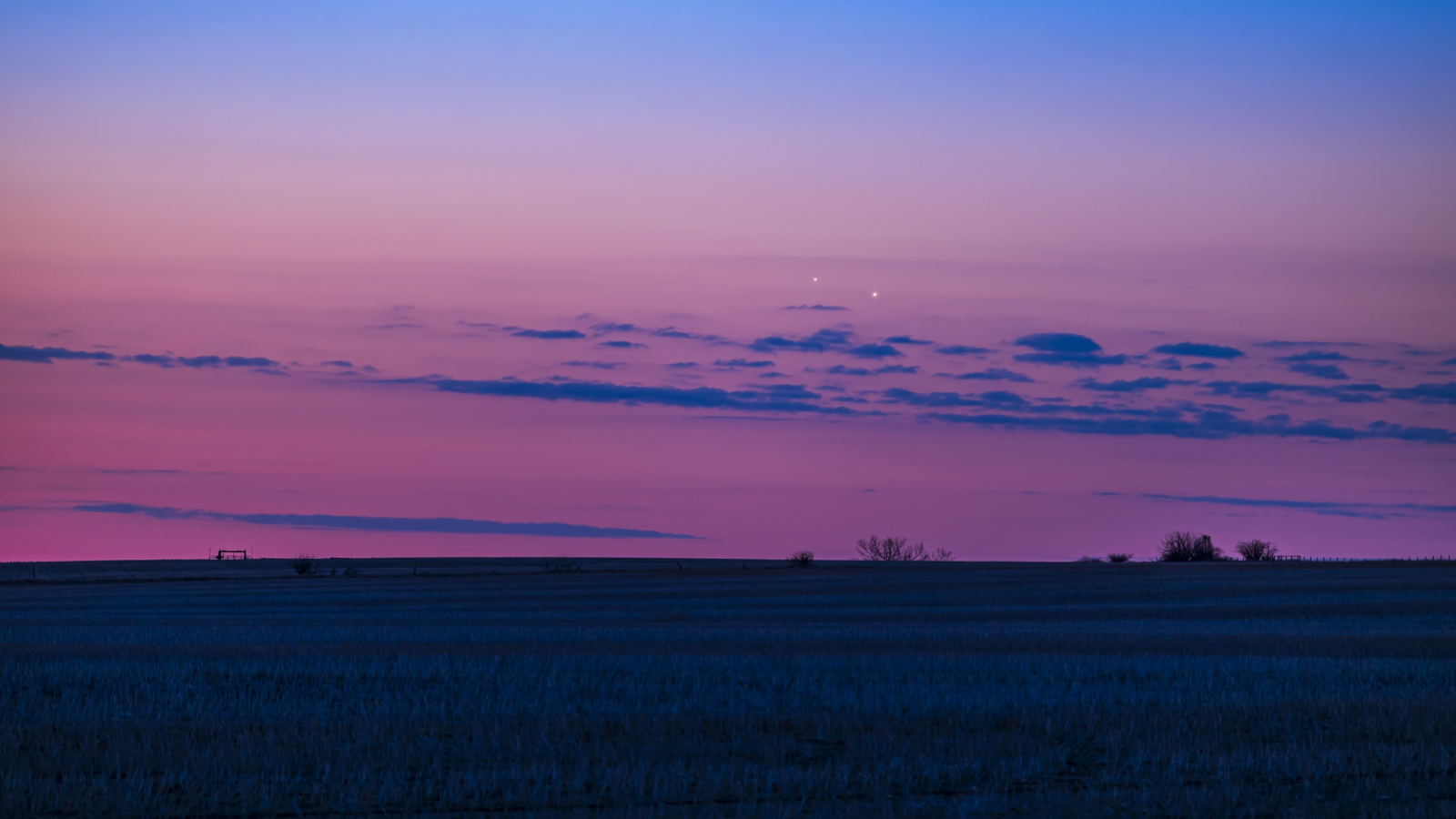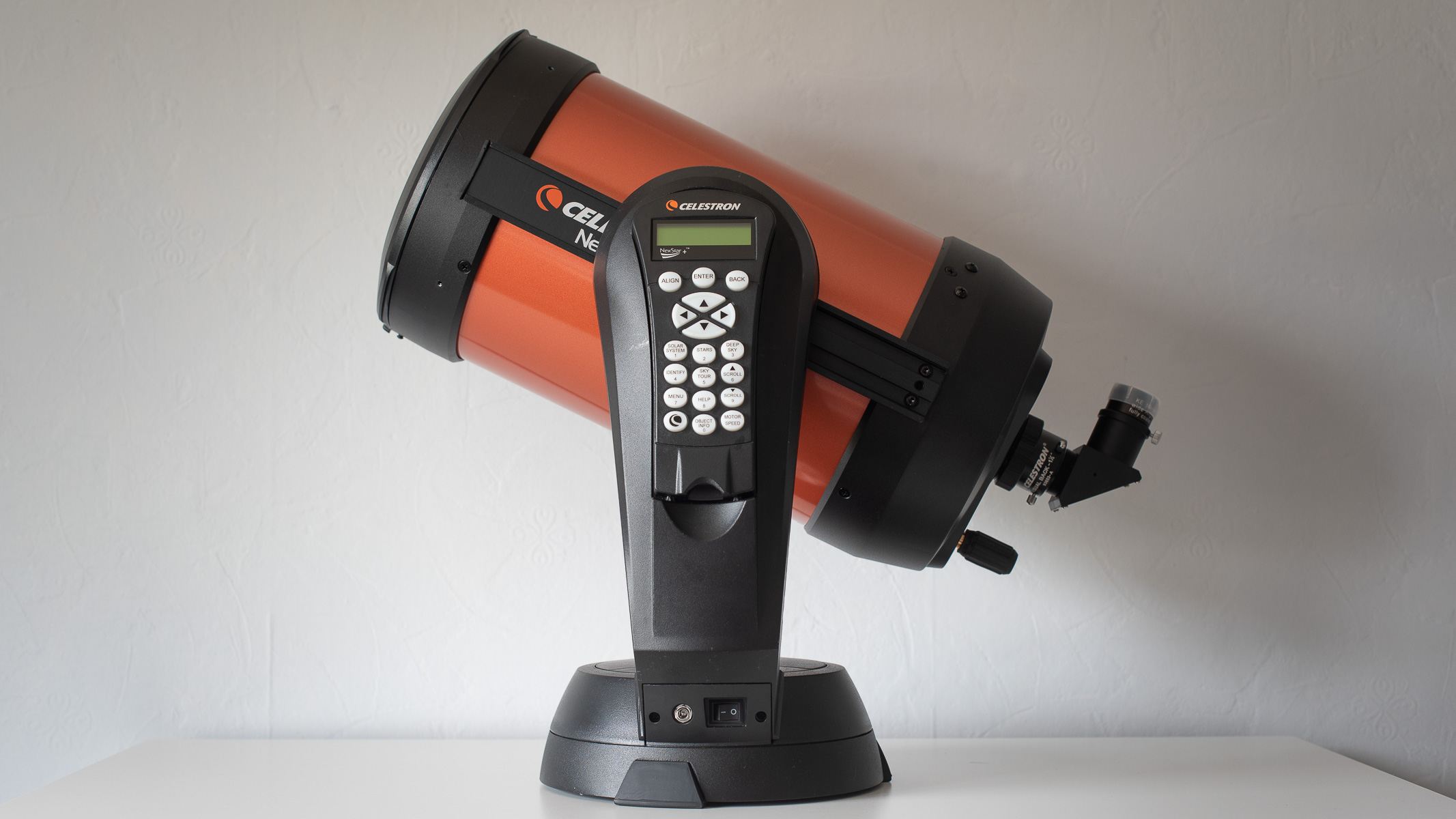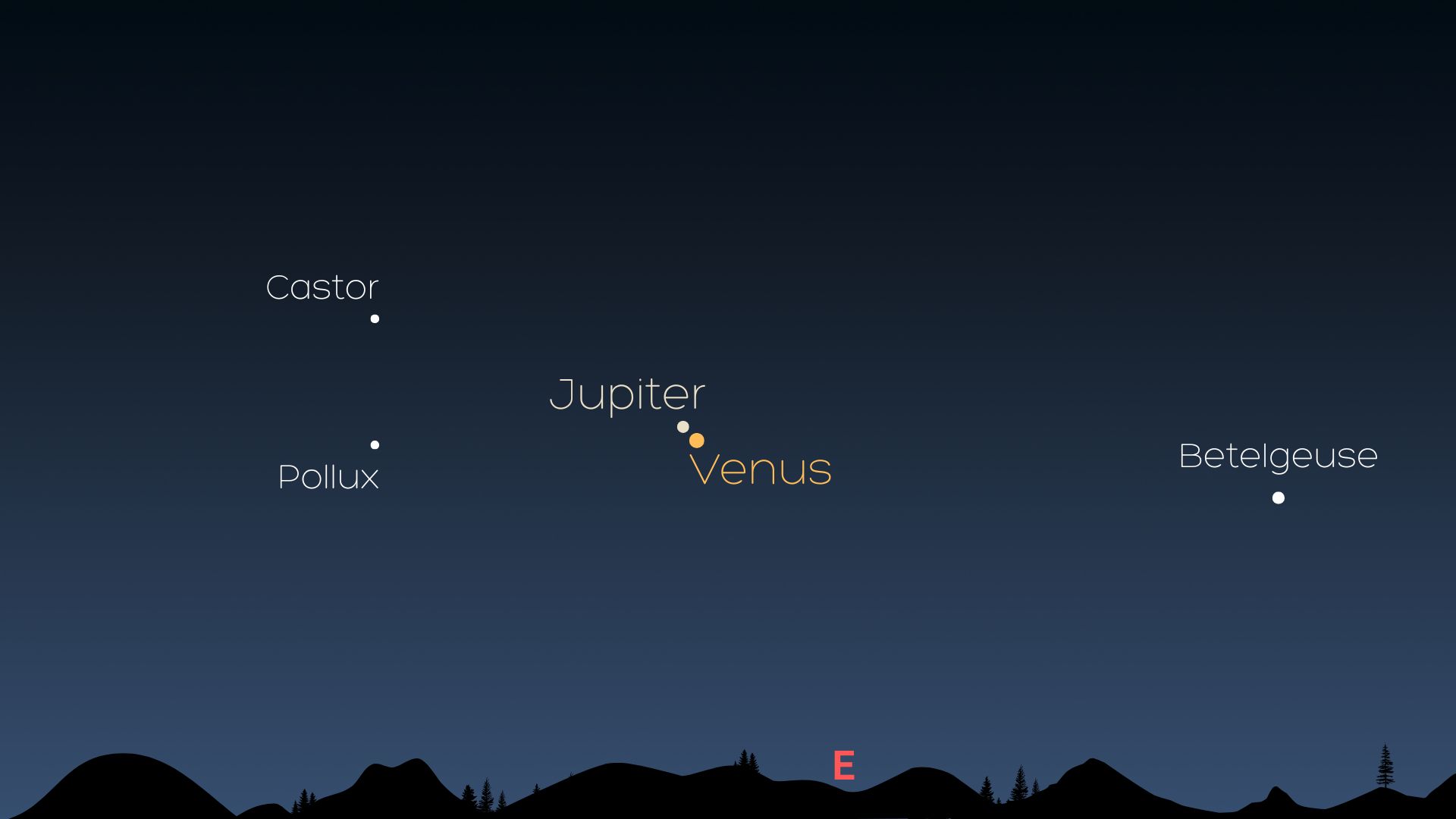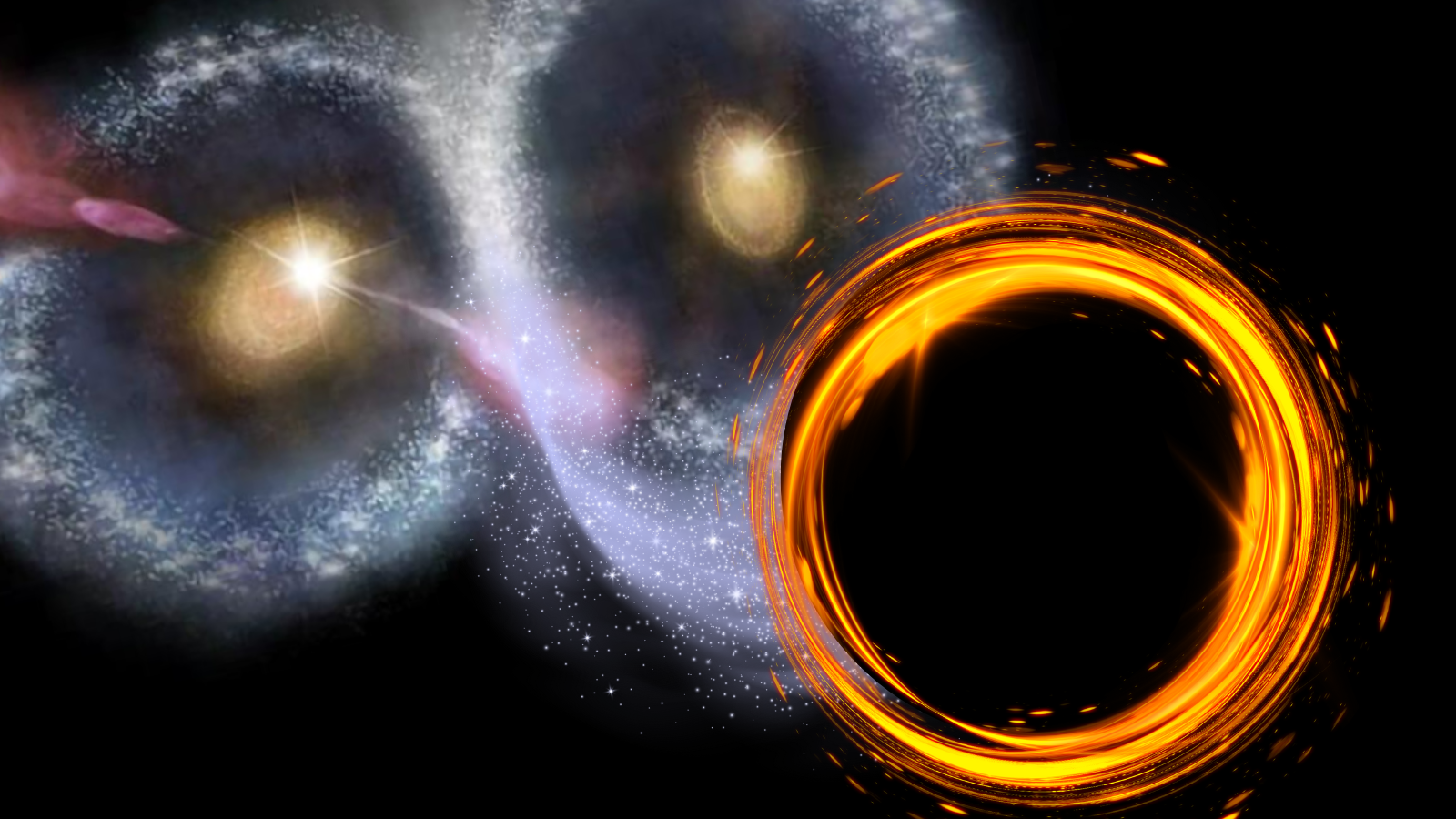Venus and Jupiter conjunction 2025: How to see two iconic planets meet in the morning sky

If you set your alarm clock for 4 a.m. local time this week and head outside to a location with a clear and unobstructed view of the eastern horizon, you'll be able to catch sight of the two brightest planets, Venus and Jupiter. The winter constellation Orion will be off to their right.
During this upcoming week, you'll be able to watch as they get closer to each other with each passing morning. On Aug.6, the two planets will be separated by 5.8 degrees; just a little more than a half fist apart. By Aug. 10, the gap between the two will have closed to just two degrees. Remember that your clenched fist held at arm's length measures roughly 10 degrees.
The time frame from Aug. 12 through Aug. 20 will be an exceptional time for predawn sky watchers, first with an eye-catching pairing of Venus and Jupiter on Aug. 12, followed a week later when the waning crescent moon drops by to join them. Venus and Jupiter will appear closest together on Tuesday morning, Aug. 12. The moment of closest approach (just 0.86 of a degree; less than twice the apparent diameter of the moon) will come when this "dynamic duo" is hovering above the east-northeast horizon across much of North America. Venus will dazzle at magnitude -4.0, while Jupiter, itself shining at a brilliant magnitude of -1.9, will appear to glow to the upper left of Venus.
Your best view will come one-quarter up from the east-northeast horizon about 45 minutes before sunrise. They are both high enough at dawn to present reasonably steady images (on good mornings) but most interesting this month is to see the globes of both together in one fairly wide telescopic field-of-view on Aug. 11 or Aug. 12. Jupiter is more than twice the apparent diameter of Venus, and yet Venus is a far more effective reflector of sunlight because it is more than seven times closer to the sun compared to Jupiter.
The moon pays a visit
Then, one week later, on Tuesday, Aug. 19, although the gap between Venus and Jupiter will have widened to 7 degrees, a narrow crescent moon, 15 percent illuminated by the sun, will join them, making for a striking triangular configuration in the morning twilight. On this morning, the moon will appear about 8 degrees directly above Jupiter.
Then, come the very next morning (Wednesday, Aug. 20), the crescent moon will have noticeably thinned to 8% and will appear to hover just 4.5 degrees to the upper left of Venus. Adding to the spectacle on both mornings will be the phenomenon known as Earthshine; sunlight reflected from Earth illuminates the night side of the moon, making its whole disk visible. Here is one of nature's beautiful sights and fits the old saying, "the old moon in the new moon's arms." In a pair of binoculars on Aug. 20, the moon will appear three-dimensional, like an eerie yellow and blue ball with diamond-like Venus blazing to its upper left.
Upcoming get-togethers
When Venus and Jupiter next get together, it will be in the evening sky late next spring, a few weeks before Independence Day, though not as close as what we will see this month. Generally speaking, conjunctions between Venus and Jupiter, as seen from the Earth, take place at mean intervals of 13 months, or more precisely 398.88 days, known as the synodic period of Jupiter (the time it takes Jupiter to return to the same position relative to the sun in the sky as seen from Earth).
Breaking space news, the latest updates on rocket launches, skywatching events and more!
Check out the table below for future Venus-Jupiter pairings for the rest of this decade.
2026 June 9 | Evening sky | 1.6 degrees |
2027 Aug. 26 | Evening sky | 0.5 degree |
2028 Nov. 9 | Morning sky | 0.6 degree |
2029 Sept. 7 | Evening sky | 1.7 degrees |
2030 Nov. 20 | Morning sky | 0.6 degree |
Sometimes, the interval between two successive Venus-Jupiter conjunctions is only ten months, as in the case of August 2025 and June 2026, but in other situations, the interval can be as much as 15 months (such as from August 2027 to November 2028).
Inevitably, some conjunctions cannot be observed because they occur too close to the sun in the sky. This will be the case, for instance, for the conjunctions in 2027 and 2030. On these occasions, the planets will be positioned (respectively) only 4 and 8 degrees from the blindingly bright solar disc.
The 24-year cycle
The sidereal revolution periods (sidereal means "with respect to the stars") of Venus, Earth and Jupiter are — respectively — 224.70, 365.25 and 4,332.58 days. If we multiply the sidereal period of Venus by 39 (8763.3 days), Earth by 24 (8766 days) and Jupiter by 2 (8665.16 days) they come very close to replicating the same type of conjunction under nearly identical conditions (occurring approximately about a week later in the calendar) every 24 years. Check out the table below. Provided are the dates, the separation between the two planets in angular degrees and the elongation or angular distance of the two planets from the sun.
Date | Separation | Elongation |
|---|---|---|
1929 July 14 | 2.2 degrees | 45.1 degrees |
1953 July 23 | 1.9 degrees | 43.2 degrees |
1977 July 30 | 1.6 degrees | 41.0 degrees |
2001 Aug. 5 | 1.2 degrees | 38.6 degrees |
2025 Aug. 12 | 0.9 degrees | 35.2 degrees |
Notice how the two planets are getting progressively closer to each other with each passing 24-year cycle. The closest observable conjunction between the two will come on September 4, 2121, when they will be separated by a mere 0.13 degrees, or about one-quarter the apparent diameter of the moon, while low in the dawn twilight.

Want to see the Venus and Jupiter conjunction for yourself? The Celestron NexStar 8SE is ideal for beginners wanting quality, reliable and quick views of celestial objects. For a more in-depth look at our Celestron NexStar 8SE review.
But this 24-cycle cannot go on forever, because while Jupiter can appear in any part of the sky, Venus can never get more than 47 degrees from the sun; so generally speaking, these Venus-Jupiter get-togethers occurring at 24-year intervals can last for no more than roughly 900 years. This current cycle began back in 1881, when an unusual triple conjunction between the two planets took place. The first two get-togethers came on Feb. 20 and May 14. But it was the third conjunction on June 20, 1881, in the morning sky, that began the current 24-year cycle. This will continue until the very last, an evening apparition on Jan. 30, 2746.
Joe Rao serves as an instructor and guest lecturer at New York's Hayden Planetarium. He writes about astronomy for Natural History magazine, Sky and Telescope and other publications.

Joe Rao is Space.com's skywatching columnist, as well as a veteran meteorologist and eclipse chaser who also serves as an instructor and guest lecturer at New York's Hayden Planetarium. He writes about astronomy for Natural History magazine, Sky & Telescope and other publications. Joe is an 8-time Emmy-nominated meteorologist who served the Putnam Valley region of New York for over 21 years. You can find him on Twitter and YouTube tracking lunar and solar eclipses, meteor showers and more. To find out Joe's latest project, visit him on Twitter.
You must confirm your public display name before commenting
Please logout and then login again, you will then be prompted to enter your display name.


